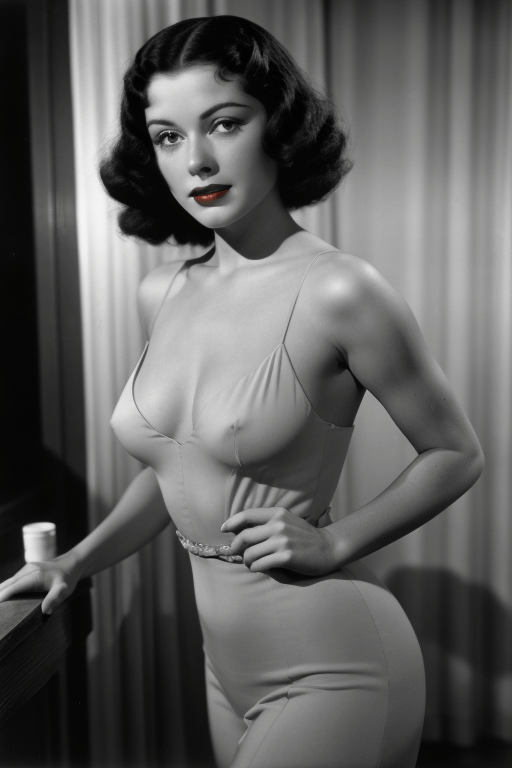
The pre-code era of Hollywood was a time when movies were not afraid to break the rules and challenge the norms. From 1930 to 1934, filmmakers experimented with themes and topics that were considered taboo or controversial by the moral standards of the time, such as sex, violence, crime, religion, and social issues. In this blog post, we will explore the history and facts of the pre-code era of Hollywood, and how it changed the film industry forever.
What was the pre-code era of Hollywood?
The pre-code era of Hollywood refers to the period between 1930 and 1934, when movies were made under a loose set of guidelines known as the Production Code. The Production Code was a document that outlined the moral principles and standards that movies should follow, such as respecting law and order, avoiding profanity and nudity, and promoting good over evil. The Production Code was created in 1930 by Will H. Hays, the president of the Motion Picture Producers and Distributors of America (MPPDA), in response to the public outcry and political pressure over the perceived immorality and corruption of Hollywood films. However, the Production Code was not enforced until 1934, when Joseph Breen, a conservative Catholic activist, became the head of the Production Code Administration (PCA), which had the power to review and censor films before their release. Therefore, between 1930 and 1934, filmmakers had more freedom and creativity to make movies that pushed the boundaries of what was acceptable and acceptable on screen.
The pre-code era of Hollywood was also influenced by the social and economic context of the time. The Great Depression, which began in 1929 and lasted until 1939, had a devastating impact on millions of Americans, who faced poverty, unemployment, homelessness, and despair. The pre-code films reflected these harsh realities and offered an escape from them, by showing stories of survival, success, romance, adventure, and humor. The pre-code films also appealed to the changing tastes and attitudes of the audience, who wanted more realism, sophistication, diversity, and excitement in their entertainment. The pre-code films catered to these demands by exploring topics and themes that were relevant and controversial at the time, such as women's rights, racial equality, workers' rights, anti-fascism, sex education, drug addiction, suicide, abortion, homosexuality.
The pre-code era of Hollywood was a brief but influential period in film history that produced some of the most daring and innovative movies ever made. The pre-code films challenged the status quo and advocated for social change. They also featured strong female characters who were independent, attractive and free-spirited.
What are some of the characteristics of pre-code films?
Pre-code films had a distinctive style and tone that set them apart from other films of the time. Some of the characteristics of pre-code films were:
- Progressive ideals: Pre-code films often challenged the status quo and advocated for social change, such as women's rights, racial equality, workers' rights, and anti-fascism. For example, I Am a Fugitive from a Chain Gang (1932) exposed the brutal conditions of the prison system and the corruption of the justice system.
- Empowering women: Pre-code films featured strong female characters who were independent, ambitious, sexually liberated, and sometimes ruthless. They were not confined to the traditional roles of wives, mothers, or damsels in distress. For example, Baby Face (1933) starred Barbara Stanwyck as a woman who uses her sexuality to climb the social ladder from a speakeasy to a bank executive.
- Gangsters: Pre-code films glamorized the lives of criminals and anti-heroes, who were often portrayed as charismatic, sympathetic, and even heroic. They also showed the violence and brutality of the underworld, without moralizing or condemning. For example, Scarface (1932) depicted the rise and fall of a ruthless gangster, played by Paul Muni, who was inspired by the real-life Al Capone.
- Social issues: Pre-code films tackled some of the most pressing problems of the Depression era, such as poverty, unemployment, homelessness, alcoholism, drug addiction, and suicide. They also depicted the dark side of urban life, such as prostitution, gambling, crime, and corruption. For example, Wild Boys of the Road (1933) followed two teenagers who leave their homes and join a group of homeless youths who ride the rails across the country.
- Monsters and mayhem: Pre-code films unleashed some of the most iconic horror creatures and villains on the screen, such as Dracula, Frankenstein, King Kong, The Mummy, The Invisible Man, and Dr. Jekyll and Mr. Hyde. They also showed graphic scenes of violence, gore, torture, and death. For example, Freaks (1932) featured real-life circus performers with physical deformities who take revenge on a trapeze artist who tries to exploit them.
- Commentary on the church: Pre-code films often criticized or mocked the hypocrisy and corruption of organized religion and religious figures. They also explored themes of sin, guilt, redemption, and faith in a cynical and skeptical way. For example, The Sign of the Cross (1932) depicted the persecution of Christians in ancient Rome with scenes of decadence, nudity, and violence.
Conclusion
The pre-code era of Hollywood was a remarkable period in film history that produced some of the most daring and innovative movies ever made. The pre-code films reflected the social and economic realities of the time and appealed to the changing tastes and attitudes of the audience. They also challenged the status quo and advocated for social change. The pre-code era came to an end in 1934 when the Hays Code was enforced by the PCA which censored and regulated film content according to a strict set of moral guidelines. The Hays Code banned or restricted many of the elements that made pre-code films so daring and innovative. As a result Hollywood films became more conservative and formulaic for the next three decades.
